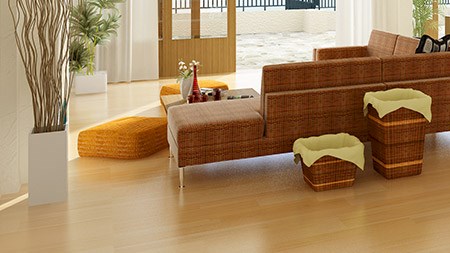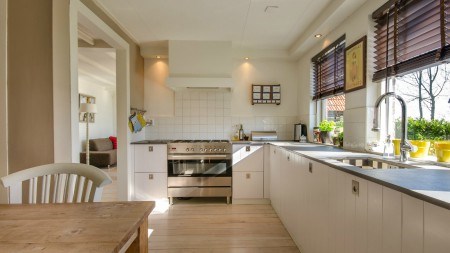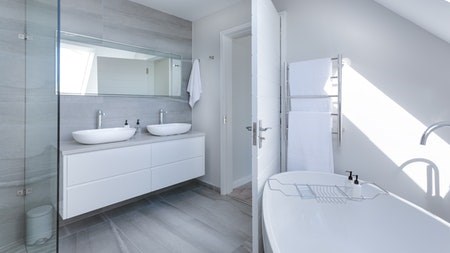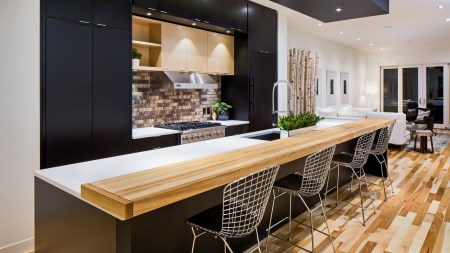These days there is a variety of options for floor surfaces, each with its own advantages.
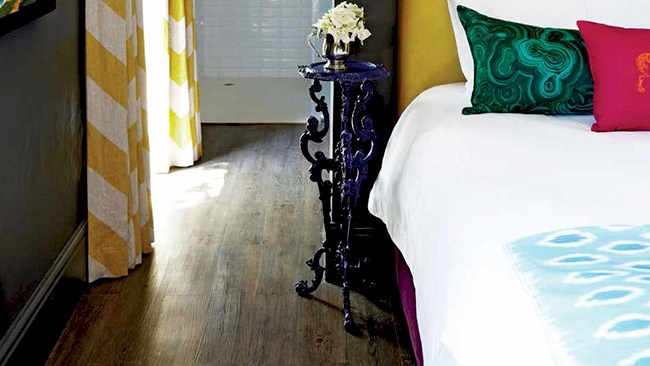
1. Carpets
For many people, there is nothing better than a cosy fitted carpet, especially for a bedroom or lounge.
Choosing a carpet
It’s important to consider the amount of traffic an area will get when choosing your carpet – a cut-pile carpet is more luxurious underfoot but not as durable as a loop-pile carpet, which can withstand heavy traffic and is ideal for passages and stairs. Choosing the colour of your carpet is an important decision and it is advisable to compare fabric and paint swatches to ensure that the colour complements your decor. Once laid, the colour of a carpet tends to look lighter than the swatch, so keep this in mind when making your choice.
Healthy myths dispelled
Carpets have had a bad reputation for harbouring germs and allergens but new technologies being applied to carpets have all but negated these concerns. In fact, it has been proven that carpets, which trap dust and dirt rather than allow it to float in the air, are actually the healthier option for those with respiratory concerns or allergies. Belgotex’s range of Silver Care carpets is a great example of this new technology (belgotex.co.za). It has been designed to inhibit bacteria, reduce odours and eliminate dust mites by destroying their food source through a base of silver ions that penetrates deeply and envelops fibres with a protective coat.
Stain-resistance
Carpets have also come a long way in their stain-resistance properties and many carpet manufacturers have developed stain-resistance measures that make preventing stains a breeze. Belgotex, for example, has two ranges of stain-resistant carpets that are very popular – Stainproof miracle fibre and Stainproof SDX. Each range has recommended treatments for all kinds of stains to ensure that the carpet remains pristine for years.
Environmentally friendly
The main benefit to the environment of carpeting your home lies with the insulating properties of carpets, especially in cooler climates. Carpets retain far more heat than other floor surfaces and simply feel warmer underfoot, reducing the need for heating your rooms during winter and saving on electricity. Carpet manufacturers are generally committed to sustainability and manufacture their products in a way that has as little impact as possible on the environment. many companies are also using recycled materials in their products, such as van Dyck Carpets’ ecolay backing, which is manufactured from recycled rubber granules (vandyckcarpets.com).
Trends
Carpets have followed the trend for the ‘new neutrals’ evident in interior design and traditional beige, creams or brown are making way for other subtle hues to tone with the wide range of greys now used in interiors. The trend is still to keep carpets relatively neutral as you are likely to want to change your colour schemes, however, patterned ranges such as Ege (egecarpets.com) are irresistible, especially the modern Indian Collection with its particularly striking florals. Lotus blossom, anyone?
2. Engineered wood flooring
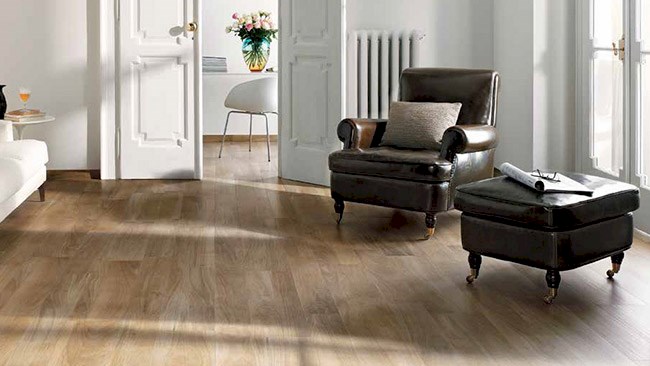
What's the difference?
Solid-wood flooring is exactly that – solid wood all the way through the plank – while engineered-hardwood floors are made up of a plywood core to which a thin veneer of solid wood, usually 3–5mm thick, is glued.
Which should I choose?
Solid-wood flooring is a real luxury item but worth every penny for durability and beauty. Exuding old-world charm and adding atmosphere to any space, solid-wood flooring is available in many different varieties of wood that each gives a unique character to a space and can be sanded and refinished to change the look completely over time. Engineered wood floors have the same look as solid-wood floors but are often more stable than solid wood in situations in which heat or moisture could pose a problem, as well as being less expensive. They can also be sanded and sealed, but as the layer of wood is quite thin, this cannot be done as often as is possible with solid wood.
Where to lay sold or engineered wood floors
Solid wood floors are not suitable for areas such as bathrooms and kitchens as timber does warp if wet, but most scratches can be sanded and repaired relatively easily if laid in high-traffic areas. Wood is a natural insulator but the floors cannot be laid over any substrate or certain surfaces, such as tiles. engineered wood floors are more versatile.
Trends
Wooden floors with a vintage feel to them are popular, as are nailed-down solid-wood floors that generate that nostalgic sound as you walk. Glued-wood floors are much quieter underfoot, as well as being considerably cheaper to install. recycled parquet and parquet or herringbone patterning is the biggest trend.
3. Laminate floors
It looks just like wood, how is it different?
Laminate floors are a modern alternative to wooden floors, and are often made of layers of recycled plywood with a photographic print of a wood finish pasted onto the plywood – this layer is not wood, although it looks just like it. The top is coated with a protective layer of film that is extremely durable and prevents laminated floors from denting, scratching or staining – a great advantage over solid- or engineered-wood floors, where this can be a concern.
Far more stable than wood, laminates are not attached to the substrate below as wood is; rather, laminate floor planks link together and float above the substrate. This has several advantages: they can expand and contract in response to changing temperatures and humidity levels and can be laid over just about any substrate, including straight over tiles.
How to choose a laminate floor
Laminate floors come in different grades, at different prices, all of which depend on elements such as the thickness of the planks and individual layers, whether the pigment is fade-resistant and how durable the top or ‘wear’ layer is. The options in terms of the look and feel of laminate floors are endless.
Where to lay a laminate floor
Laminate floors can be damaged by water, so they are not recommended for bathrooms. Other than that, they can be laid throughout the home.
Trends
Laminate floors offer a wide range of light-wood looks, with lime or white-washed timber being one of the most popular. Many buyers are moving over to laminates because of their competitive pricing but, despite efforts to reduce noise, many laminates are still noisier than wooden floors.
4. Vinyl
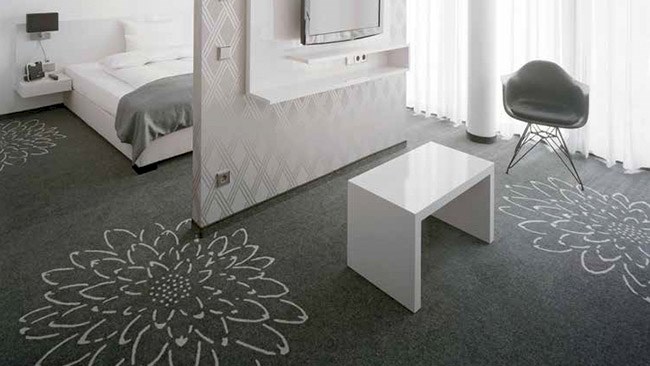
You may cringe at the thought of vinyl floor coverings, remembering the garish vinyl tiles that adorned many a ’70s kitchen and bathroom in South Africa, but today they’re state-of-the-art products that are an alternative to solid-wood, engineered wood and laminate floors. Vinyl also come in a range of other finishes, such as marble, limestone and granite, giving homeowners myriad options in terms of the look they would like for their home – with almost none of the maintenance that would normally be associated with these finishes.
How is vinyl different from laminate?
Simply put, vinyl floor coverings are waterproof and thus can be laid on any smooth floor, even in bathrooms. And most vinyl are glued to the substrate, unlike most laminates that are connected by a tongue-and-groove system that locks into place without adhesive. Cushioned vinyl are also exceptionally soft underfoot and as durable and scratch- and stain-resistant as laminates. Vinyl tiles and planks and cushioned vinyl are very stable and able to withstand variations in heat and humidity.
5. Bamboo
Why choose bamboo
Bamboo is an exceptionally fast-growing, sustainable and environmentally friendly alternative. It’s considered to be hardwood and has similar durability to a solid-wood floor, plus the same warmth and beauty.
What is strand-woven bamboo flooring?
It’s an environmentally friendly means of producing bamboo flooring with minimal wastage. "Moso bamboo stalks are cut into small pieces, boiled down and then dried. The boiling process removes all the sugars, essential for the prevention of termites. Once strands are dry, they are pressurised and flattened into planks with a low VOC adhesive. This process creates a solid plank with a density virtually twice that of a regular bamboo flooring plank," says Lana Jooste of Brightfields Natural Trading Company (brightfields.co.za).
Choosing the right bamboo floor
Brightfields suggests that you look for a click-lock system. Theirs is available as a floating installation and requires no nailing, glueing or stapling, and their planks are also the widest on the market. Bamboo Warehouse (bamboowarehouse.co.za), which has its own installation teams, say there are pros and cons to the tongue-and-groove option. An equal number of clients go for the 96mm vertical bamboo flooring, which suits the more classic look of a traditional house. Bamboo Warehouse also does composite decking (60% bamboo and 30% recycled plastic) so bamboo can be installed both inside and out.
6. Corcoleum
What is corcoleum?
An environmentally friendly option for flooring, corcoleum has been used in factories and large spaces for many years and Corcoleum (corcoleum.co.za) has been in business since 1925. "We’ve been laying corcoleum in residential properties for about 25 years," says the owner of Corcoleum, Gregory Kain, "and, although it was mainly done in old Cape Dutch houses, we do a lot more modern houses today."
Corcoleum is essentially a type of Magnesium Oxychloride flooring that utilises recycled materials. One of their products, Maplette Magnesium Oxychloride Flooring, consists of 80% recycled wood shavings, including SA pine and meranti shavings, making it exceptionally eco-friendly. "We’re the only company in the world using sawdust to create this type of flooring. although it consists of approximately 80% wood, it is 100% fireproof and is SaBS approved," says Kain.
What are the advantages of corcoleum?
Corcoleum flooring is hardwearing, warm underfoot, water-resistant, a good insulator and one of the most eco-friendly options on the market. It is smooth and jointless and is therefore very easy to maintain. The floor is also termite resistant and prohibits bacteria from living in or on it. Corcoleum is very durable and lasts for years. "Some of our floors that were laid in the 1960s are still in excellent nick today," says Kain.
7. Tiles
Still one of the most popular options for sheer ease of maintenance, tiles is available in more sizes and finishes than ever before. Tiles can be made out of many substances, although the most common, and cost-effective, are usually ceramic or porcelain. you could also choose natural stone, marble, terracotta, sandstone, cement or slate tiles. The glaze with which tiles are coated is subject to a testing process that results in a rating. This PEI (Porcelain and Enamel Institute) rating provides consumers with a guideline as to where the tiles should be used based on how much wear the glaze can withstand. as with all flooring types, it is advisable to do your research before laying your tiled floor.
Advantages of tiles
Tiles are generally completely waterproof and therefore suitable for all areas, including patios and verandas. Many are slip-proof, too, so that they can be used indoors or out. They are exceptionally durable and don’t scratch, dent or fade easily, and look good for years. They are very easy to clean and you don’t have to worry about staining or discolouring.
So what's the disadvantage?
Tiles can be very cold in winter, although it is possible to lay underfloor heating under the tiles at the time they are installed.
